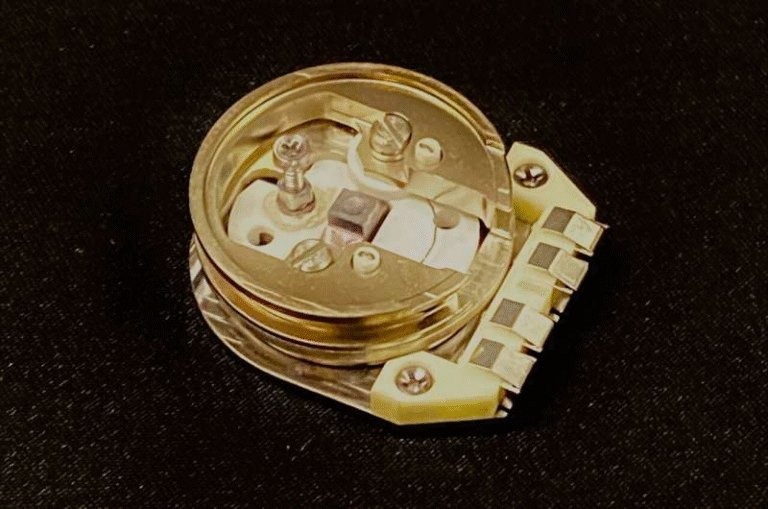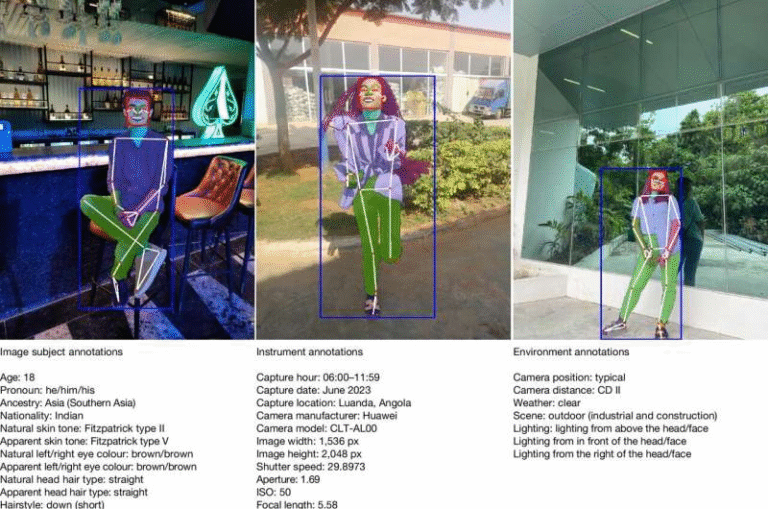Tiny Robots That Can Swarm, Adapt, and Heal Themselves: How Sound Waves Are Powering the Next Generation of Microrobots

Scientists at Penn State University and Ludwig Maximilian University of Munich have unveiled a groundbreaking discovery in the field of microrobotics and active matter physics — tiny robots that can move, swarm, adapt, and even heal themselves using sound waves as their primary form of communication. This new research could eventually reshape the future of medicine, environmental cleanup, and robotic design.
The study, led by Igor Aronson, a professor of Biomedical Engineering, Chemistry, and Mathematics at Penn State, and conducted in collaboration with Alexander Ziepke, Ivan Maryshev, and Erwin Frey from LMU Munich, was recently published in Physical Review X.
Let’s take a closer look at what makes these microrobots so extraordinary, how they work, and why this discovery matters.
The Concept: Using Sound to Control Tiny Robots
The research explores how acoustic (sound) waves can be used to control and coordinate microscopic robots, allowing them to behave like living swarms — similar to bees, birds, or fish moving in harmony. Traditionally, such collective robotic systems rely on chemical signals or optical communication, which are slower and less efficient.
In this new model, sound becomes the unifying language. The team found that sound waves, which travel quickly and lose little energy over distance, could provide a simple yet powerful mechanism for large numbers of tiny robots to move and organize themselves in a synchronized way.
Each microrobot in the model is equipped with:
- A tiny motor for propulsion.
- An acoustic emitter that generates sound.
- A sound detector (microphone) that listens for signals from other robots.
- An internal oscillator that helps it synchronize with the swarm’s collective rhythm.
Even though these robots are incredibly simple — just a few components and basic circuitry — they display remarkable collective intelligence. When one robot moves or emits sound, it influences others nearby, setting off a chain reaction that allows the entire group to act as one cohesive unit.
Self-Organization and Collective Intelligence
In computer simulations, the researchers observed that these microrobots could self-organize into various shapes and patterns. They could form chains, rings, blobs, or snake-like clusters that moved as a group.
When the swarm was disrupted — for instance, if part of it was separated or disturbed — it could reassemble itself, demonstrating what the researchers describe as “self-healing” behavior. This property could be extremely valuable for real-world applications, where robots might have to operate in harsh or unpredictable environments.
The collective movement is governed by a few simple rules:
- Each robot listens to the surrounding acoustic field.
- It adjusts its internal frequency to match the dominant sound it hears.
- It moves toward areas with stronger sound intensity.
As a result, the swarm develops an emergent intelligence — a group-level awareness that allows them to adapt to changing surroundings without any central control system.
Why Sound Waves Are a Big Deal
Sound offers several key advantages over other control methods used in microrobotics.
- Speed and Range: Unlike chemical signals, which spread slowly and decay quickly, sound waves move fast and travel long distances with little energy loss.
- Simplicity: The components needed to emit and detect sound are easier to design and miniaturize compared to complex chemical or optical systems.
- Efficiency: Sound waves don’t require complex processing — they can be used as direct communication and navigation cues for the swarm.
By replacing chemical signaling with acoustic signaling, researchers are essentially introducing a new communication channel for active matter — one that could open the door to smarter and more robust robotic systems.
What the Experiments Showed
The study was conducted through agent-based computer simulations, meaning the robots were modeled digitally rather than physically built. However, the simulations were designed with real-world constraints in mind and revealed highly realistic outcomes.
The robots could:
- Move collectively in coordinated patterns.
- Sense and react to their environment using sound reflections (like sonar).
- Navigate confined spaces, even squeezing through narrow passages.
- Re-form their structure after being split apart.
In some simulations, the swarms exhibited what could be described as collective perception — they responded to obstacles or environmental boundaries as a unified entity, suggesting the beginnings of group-level awareness.
While these microrobots only exist as computational models for now, the researchers believe that the same behaviors could emerge in physical experiments once the devices are built.
Potential Applications
The possibilities for this technology are vast. Here are a few examples of what these sound-driven microrobots might be capable of in the future:
1. Medical Applications
One of the most exciting uses would be in medicine. Tiny robotic swarms could move through the human body to deliver drugs directly to targeted tissues or perform minimally invasive surgeries. Their ability to adapt, reassemble, and “self-heal” would be particularly valuable for navigating complex biological environments like blood vessels or tissue structures.
Because sound waves travel well through biological tissue, acoustic communication could be a practical way for these robots to coordinate their movements inside the body.
2. Environmental Cleanup
Another potential application is environmental remediation. Swarms of microrobots could be released into polluted water or soil to detect and remove contaminants, or to repair damaged ecosystems. Their ability to sense environmental changes collectively could allow them to efficiently locate pollutants and operate autonomously in hard-to-reach areas.
3. Disaster Response and Exploration
Imagine swarms of microrobots exploring disaster zones, searching for survivors in collapsed buildings, or navigating deep-sea or planetary environments where human presence is impossible. Their self-organizing and adaptive behavior could make them ideal for missions where conditions are unpredictable and communication is difficult.
The Science of Active Matter
To understand why this discovery is so exciting, it helps to know a bit about active matter — the field of physics that studies systems made of self-propelled agents that can move and interact.
Active matter includes:
- Biological systems like flocks of birds, schools of fish, swarming insects, or even bacterial colonies.
- Synthetic systems like microrobots or nanoparticles that move autonomously.
Researchers in this field aim to uncover the rules of collective behavior — how simple interactions between individuals can lead to complex group dynamics. The new Penn State study is a major step forward because it shows that sound waves can act as a control mechanism in active matter systems, adding a new layer of complexity and possibility to swarm behavior.
Until now, most active matter studies focused on chemical or visual cues. Sound-based coordination adds a new dimension to how we might design artificial systems that mimic the collective intelligence seen in nature.
Challenges Ahead
While the results are impressive, it’s important to note that this is still a theoretical study. The robots have not yet been built in physical form. Translating these simulations into working hardware will require solving several engineering challenges:
- Miniaturization: Building actual microrobots small enough to operate at the microscale, with functioning emitters and detectors.
- Energy management: Developing tiny, long-lasting power sources for these robots.
- Real-world testing: Ensuring that sound-based communication remains effective in fluid environments, tissues, or other complex media.
Despite these challenges, the researchers are optimistic. The simplicity of the design — just a motor, speaker, microphone, and oscillator — makes real-world fabrication seem achievable in the near future.
The Broader Impact
This research doesn’t just apply to robotics — it could influence multiple fields at once. In materials science, the same principles could be used to design “smart materials” that change shape or repair themselves using sound-based coordination. In physics, it expands our understanding of how simple systems can develop emergent intelligence — complex behavior arising from basic rules.
It also points toward a future where robotic swarms can perform large-scale tasks without central control or heavy computation. Instead of being programmed for every situation, they could simply be designed to follow basic acoustic rules, letting intelligent behavior emerge naturally from their interactions.
The Researchers and Funding
The study was a collaboration between Pennsylvania State University (United States) and Ludwig Maximilian University of Munich (Germany). The research was supported by the John Templeton Foundation, an organization known for funding interdisciplinary work that bridges science and philosophy.
The authors of the paper are:
- Alexander Ziepke
- Ivan Maryshev
- Igor S. Aronson
- Erwin Frey
Together, their work opens a new chapter in the design of self-organizing microrobots capable of operating in environments that were once beyond the reach of conventional machines.
Final Thoughts
What makes this discovery truly exciting is its simplicity. With only a few components and no centralized controller, these microrobots can perform complex, adaptive behaviors that seem almost biological. The idea that sound — one of the most fundamental forms of energy — can be used to make robots “think” and “move” together is both elegant and revolutionary.
It’s still early days, but this research could be the foundation for future technologies that clean our oceans, deliver medicine inside our bodies, and explore worlds we’ve never seen — all guided by the invisible waves of sound.
Research Reference:
Acoustic Signaling Enables Collective Perception and Control in Active Matter Systems – Physical Review X (2025)





